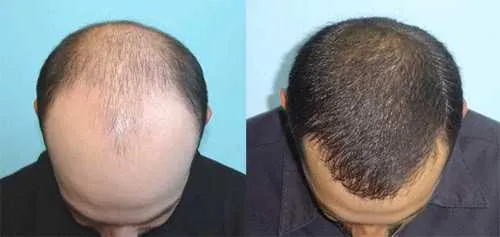Millions of U.S. citizens suffer from hair loss. Instead of ignoring this quite personal medical issue, many people choose hair transplantation to help remedy it. In this article, we will compare two different hair transplant devices: Artas Robotic Hair Restoration and NeoGraft FUE.
According to data provided by The American Hair Loss Association, about 67% of U.S.-based men will start experiencing hair loss by the age of 35, and 85% of those will experience this issue at a significant level. Unfortunately, hair loss does not only affect men. Among all people suffering from hair loss, 40% of them are female. The North American Hair Research Society states that 50% of female patients face hair loss at the age of 50. So, let’s determine the differences between the NeoGraft Transplant and Artas Robot Transplant as remedies for this problem.
The Working Principle
NeoGraft is a hand-held machine that implants follicular units drilled out from the donor area. An operator applies the tool to this area, separates grafts from the tissue, and then drills them out. Once a portion of grafts is extracted, a hand-held device individually injects every single graft in a patient’s tissue. Since the machine injects grafts using air pressure, it cannot guarantee their proper positioning.
How does the Artas robotic system work? Unlike NeoGraft, Artas is an automated machine which does not rely on the operator’s skill. It is aimed at graft extraction with a laser precision. Using complex algorithms and built-in cameras, the robotic system scans a small area of the scalp to identify grafts to be extracted according to the previously created 3D model. The key difference between the NeoGraft and the Artas devices is that the latter device performs an automated follicular unit extraction (FUE) almost without any human control. Artas selectively harvests hair and ensures the essential look of the donor area. Once the system has extracted follicular units, it injects them into thinning areas with robotic precision.
Artas Robotic System vs NeoGraft Machine
FUE procedures are not new to the market, though most of them are performed manually, which makes the surgery quite a time-consuming task. A robotic hair transplantation technique provides patients with multiple benefits that include:
- A robotic FUE procedure is minimally invasive and painful;
- It leaves no linear and discernible scars; and,
- It creates the same grafts every time, which is impossible for a human to do.
Manual FUE procedures take a tremendous amount of time and require a steady physician’s hand. A doctor has to carefully operate a machine to ensure a quality result. In the Artas Hair Transplant vs NeoGraft comparison, the robotics system seems to be a more efficient and innovative technology; however, the cost of such procedures can persuade some patients to choose the traditional manual method, instead. When it comes to medical robotics, the procedure gets cheaper per graft if there is a larger number of grafts to be transplanted, unlike manual surgery where the cost goes up as more grafts are extracted.
Which Is Better?: Artas vs NeoGraft
Both systems have their own advantages, but Artas represents a new age of hair transplantation procedures. Bringbackhair has provided this comparison of Artas Robotic vs NeoGraft FUE that proves that the automated system obviously brings more precise results and allows patients to spend less time on the process.
Since robotic hair transplants are less invasive, compared to manual techniques, Artas ensures a fast hair growth with minimal tissue injury. At the same time, traditional methods are more cost-effective when it comes to transplanting small amounts of grafts. Weigh out the pros and cons and choose a more convenient technology for your particular case.

